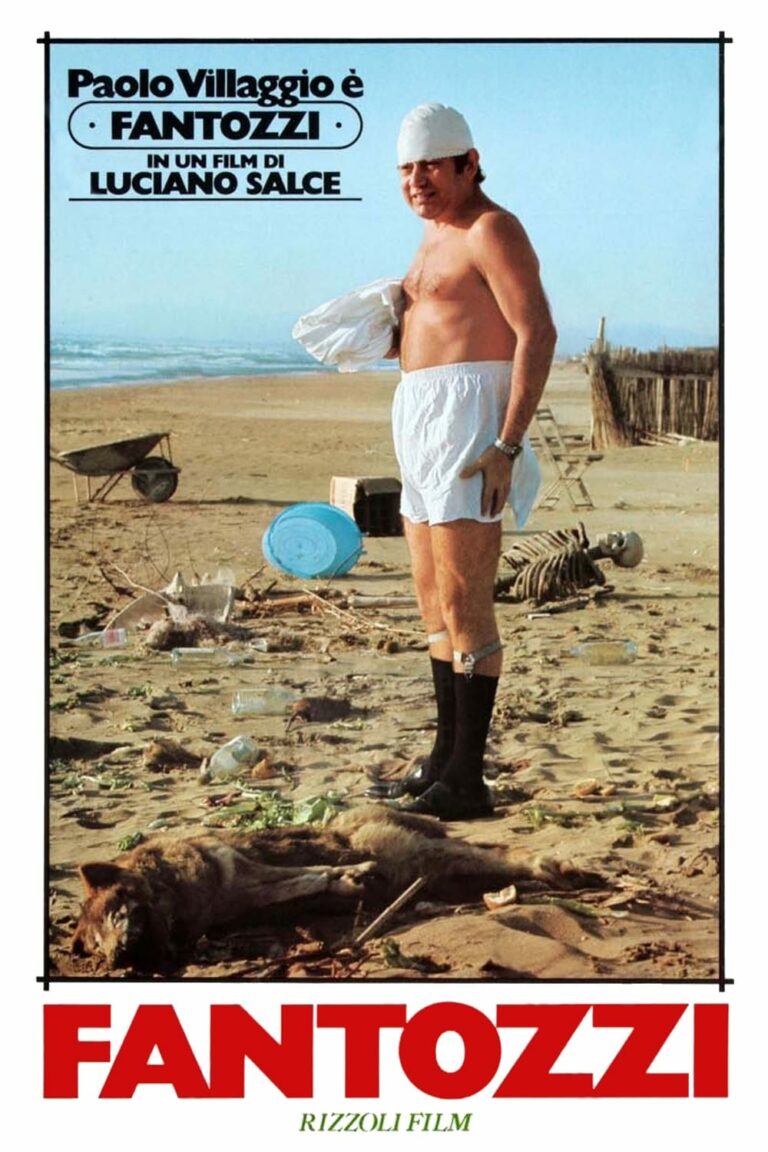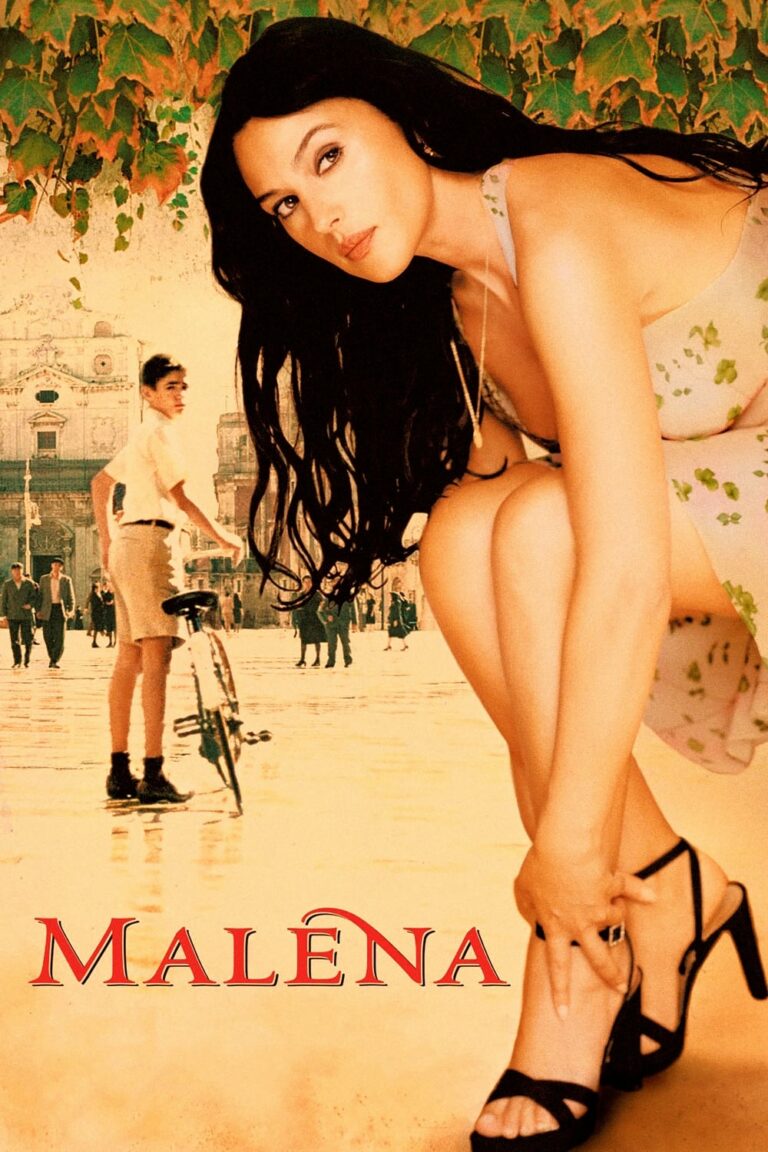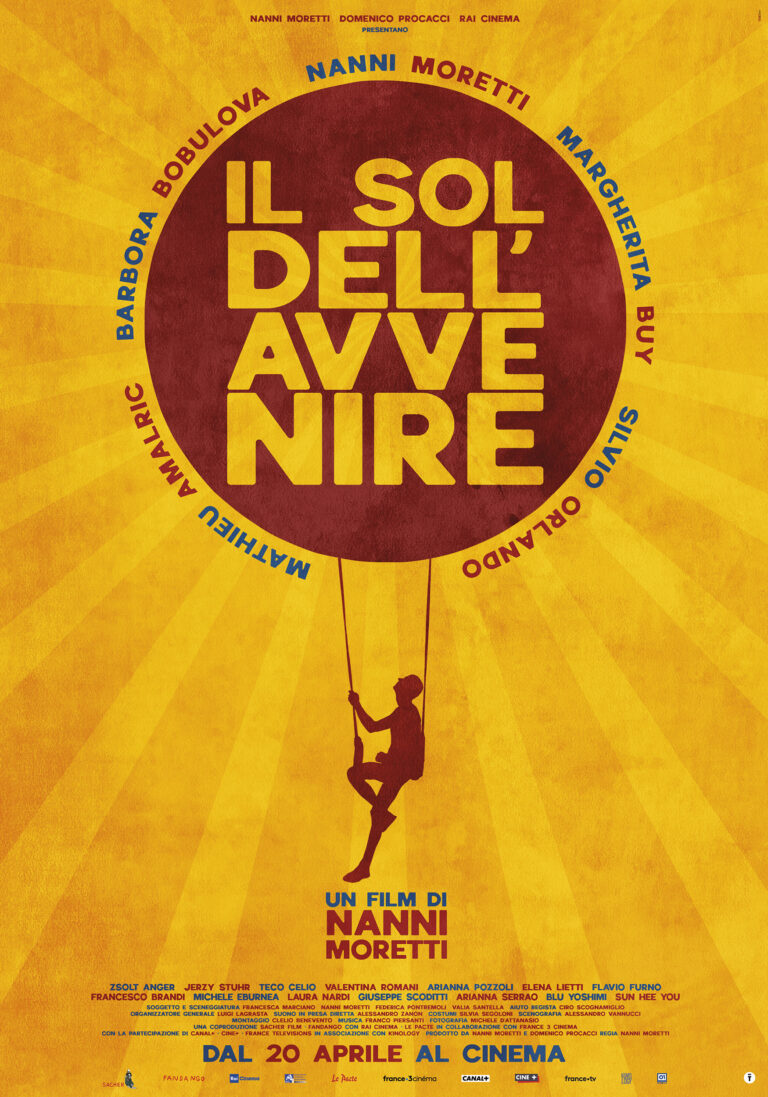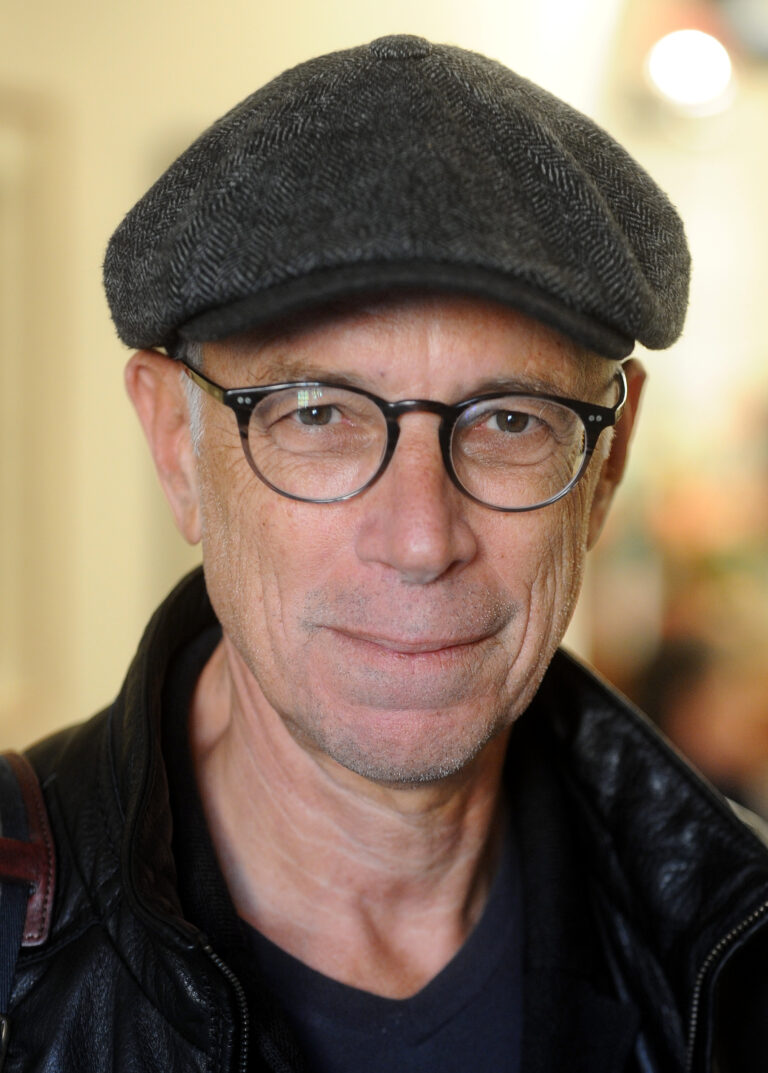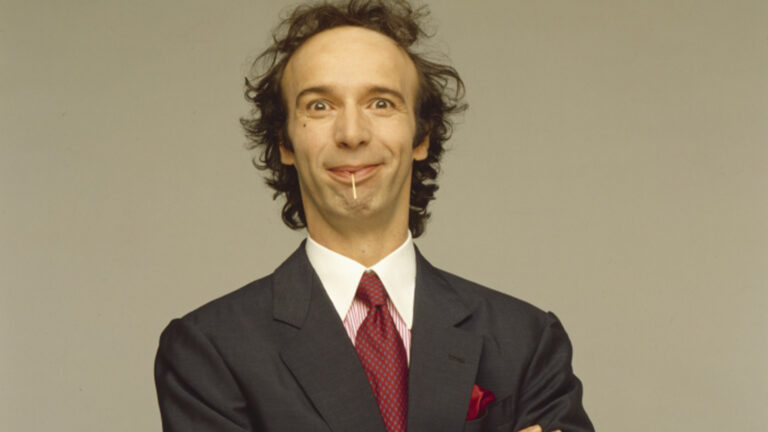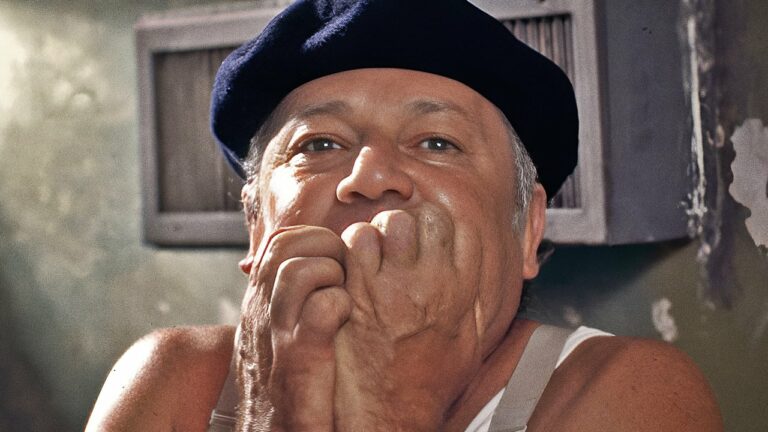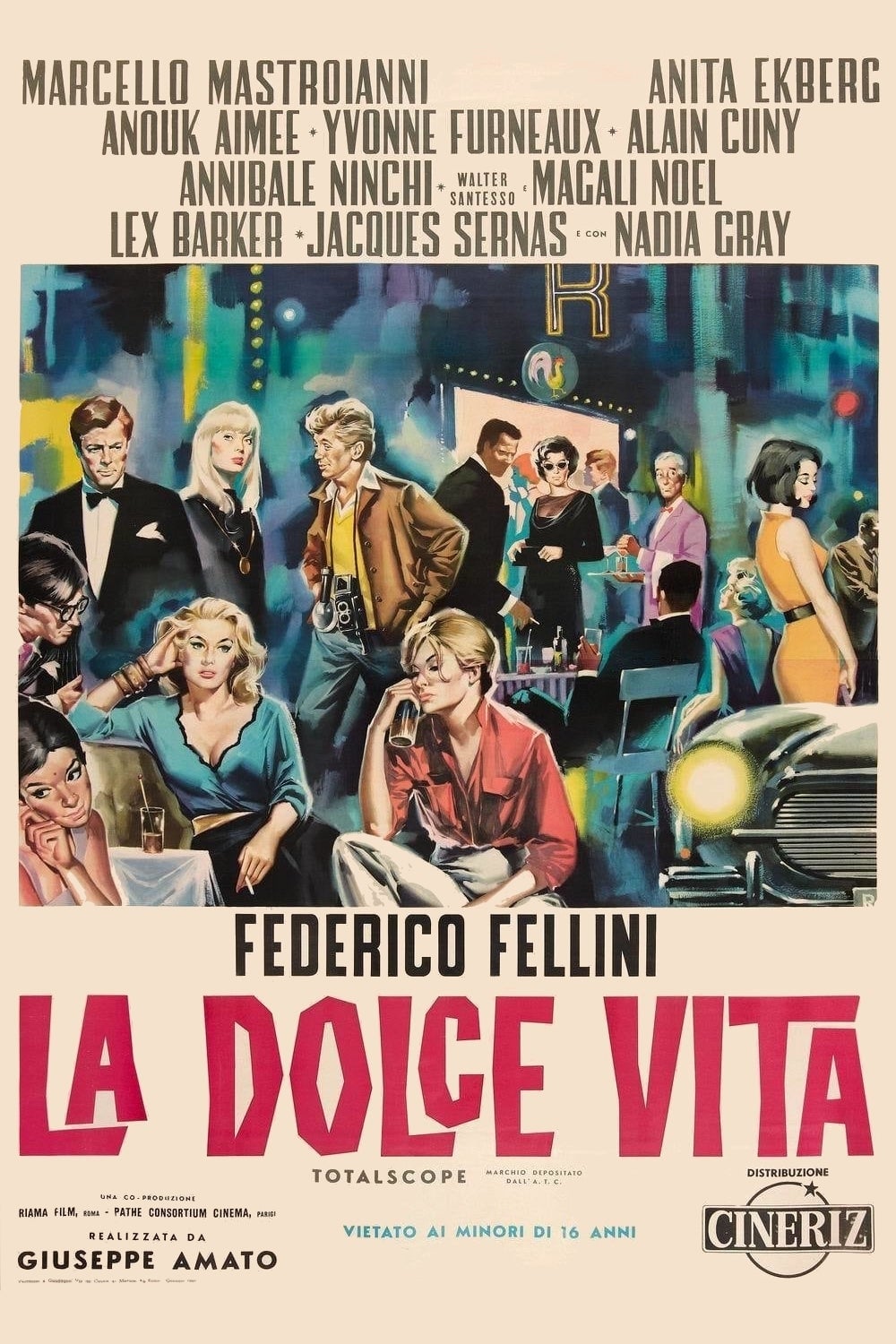
Federico Fellini’s La Dolce Vita (1960) captures the essence of post-war Italian society with its blend of grandeur, hedonism, and existential exploration. As one of the most influential films in cinema history, it serves as both a critique and celebration of Rome’s high society during the economic boom of the 1950s. Winner of the Palme d’Or at the Cannes Film Festival, La Dolce Vita remains a timeless study of human desires, disillusionment, and the quest for meaning in an increasingly materialistic world.
Introduction
Released in 1960, La Dolce Vita (The Sweet Life) is a landmark film that redefined narrative and visual storytelling. Directed by Federico Fellini, it follows journalist Marcello Rubini as he navigates Rome’s decadent nightlife and affluent circles. The film’s episodic structure and surreal moments immerse viewers in a world where pleasure and emptiness coexist.
The title itself has become synonymous with indulgence and excess, making La Dolce Vita more than a movie—it is a cultural phenomenon that continues to resonate with modern audiences.
Plot Summary
Prologue
The film opens with an unforgettable image: a helicopter transporting a statue of Christ over Rome, symbolizing the clash between sacred and profane. This sets the tone for Marcello’s journey through a city rife with contradictions.
The Seven Nights and Days
Marcello (Marcello Mastroianni), a tabloid journalist, drifts between extravagant parties, romantic entanglements, and fleeting moments of introspection.
- Meeting Maddalena
Marcello encounters Maddalena (Anouk Aimée), a wealthy socialite, and engages in a brief affair, showcasing the superficiality of their relationships. - Sylvia’s Arrival
Swedish actress Sylvia (Anita Ekberg) embodies glamour and excess. Her iconic wade through the Trevi Fountain with Marcello is a dreamlike moment of beauty and unreality. - Steiner’s Tragedy
Marcello admires his intellectual friend Steiner (Alain Cuny), who appears to have a meaningful life. However, Steiner’s shocking suicide exposes the fragility of intellectual fulfillment. - The Final Party
Marcello descends further into depravity during a chaotic party at a seaside villa. His existential despair culminates in an encounter with a dead sea creature, symbolizing his moral and spiritual stagnation.
Epilogue
In the closing scene, Marcello sees a young girl (Paola) on the beach, representing innocence and hope. However, their inability to communicate reflects his estrangement from purity and meaning.
Historical Context
Set during Italy’s post-war economic boom, La Dolce Vita reflects a society undergoing rapid modernization. Rome became a hub for wealth, celebrity culture, and media sensationalism. Fellini critiques this newfound affluence, exposing its superficial allure and underlying emptiness.
Federico Fellini’s Vision
Fellini masterfully combines realism and fantasy to create a film that transcends traditional narrative conventions. His episodic structure mirrors the fragmented nature of Marcello’s experiences, while his use of surreal imagery challenges viewers to delve into the protagonist’s psyche.
Fellini intended La Dolce Vita as a critique of materialism and a meditation on the human condition. His unflinching portrayal of hedonism is both seductive and unsettling, compelling audiences to question their own values and desires.
Main Characters
- Marcello Rubini (Marcello Mastroianni): A tabloid journalist torn between ambition, pleasure, and a longing for purpose.
- Sylvia (Anita Ekberg): A glamorous actress who embodies the allure and vacuity of celebrity culture.
- Maddalena (Anouk Aimée): A wealthy socialite who represents superficial relationships.
- Steiner (Alain Cuny): An intellectual whose tragic fate underscores the futility of seeking meaning in a shallow world.
- Emma (Yvonne Furneaux): Marcello’s fiancée, whose devotion contrasts with his infidelity and disillusionment.
Themes in La Dolce Vita
1. Hedonism and Decadence
The film explores Rome’s culture of excess, where pleasure often masks existential despair.
2. Existentialism and Alienation
Marcello’s journey highlights the human struggle to find meaning in a world dominated by appearances.
3. Societal Critique
Fellini critiques consumerism, celebrity worship, and the erosion of spiritual values in modern society.
4. Sacred vs. Profane
The juxtaposition of religious imagery with debauchery reflects a society torn between tradition and modernity.
Iconic Scenes
- The Trevi Fountain Scene
Sylvia’s moonlit frolic in the Trevi Fountain with Marcello is one of cinema’s most iconic moments, symbolizing fleeting beauty and escapism. - The Helicopter Scene
The opening scene of Christ’s statue being flown over Rome sets a surreal tone, blending the sacred and the profane. - Steiner’s Suicide
This shocking moment shatters Marcello’s illusions, exposing the emptiness of intellectual and material pursuits.
Cinematography and Style
Fellini’s collaboration with cinematographer Otello Martelli results in stunning black-and-white visuals that enhance the film’s dreamlike quality. Long tracking shots, dynamic compositions, and innovative lighting create a cinematic language that captures both the beauty and chaos of Rome.
Cultural Impact and Legacy
La Dolce Vita revolutionized cinema, influencing filmmakers like Martin Scorsese, Woody Allen, and Paolo Sorrentino. Its critique of celebrity culture and consumerism remains strikingly relevant in the age of social media. The film also introduced the term “paparazzi,” derived from the character Paparazzo, a relentless photographer.
Controversies and Criticism
Upon its release, La Dolce Vita faced backlash from the Vatican for its perceived moral decadence. However, its artistic merit and profound commentary quickly overshadowed these criticisms, earning it acclaim as a cinematic classic.
Awards and Accolades
- Palme d’Or at the 1960 Cannes Film Festival
- Academy Award nomination for Best Director (Fellini)
- BAFTA Awards nomination for Best Film
FAQs
- What does “La Dolce Vita” mean?
It translates to “The Sweet Life,” reflecting the indulgent lifestyle depicted in the film. - Is La Dolce Vita autobiographical?
While not strictly autobiographical, Fellini drew inspiration from his experiences as a journalist in Rome. - Why is the Trevi Fountain scene iconic?
Its visual beauty and emotional resonance make it a defining moment in cinematic history. - What is the significance of the sea creature at the end?
The dead sea creature symbolizes Marcello’s moral and spiritual decay. - How long is the film?
La Dolce Vita has a runtime of 174 minutes. - Is the film still relevant today?
Yes, its critique of materialism and exploration of existential themes remain timeless.
Conclusion
Federico Fellini’s La Dolce Vita is a tour de force that transcends its era, offering a profound exploration of human nature and society. With its iconic imagery, complex characters, and timeless themes, the film continues to captivate and inspire audiences worldwide. As both a critique and celebration of “the sweet life,” it invites viewers to reflect on their own pursuits of happiness and meaning.
